Free Describing 2D Shapes Mini-Booklet for Kindergarten
Introduce how to describe 2D shapes by simply using dots and lines. Here is a free printable booklet to describe the attributes of 2D shapes for kindergarten.
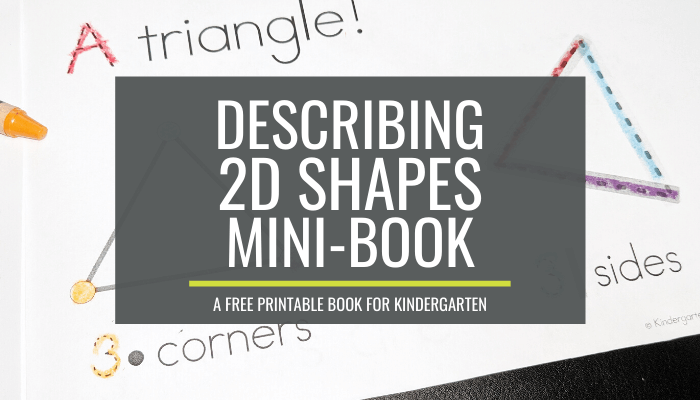
Let me share why it works, how I used it and how to make it for your classroom.
Why it works
This little mini-book could be called a “trace and complete” booklet.
It was designed to follow a pattern and support early readers/non-readers.
The pattern
It has a basic format:
- The first page asks a question based on a shape’s attributes
- The second page answers it
This pattern helps young students see that all shapes can be described using words like “corners” or “sides.” But it also helps them see that all shapes differ in the numbers of each attribute.
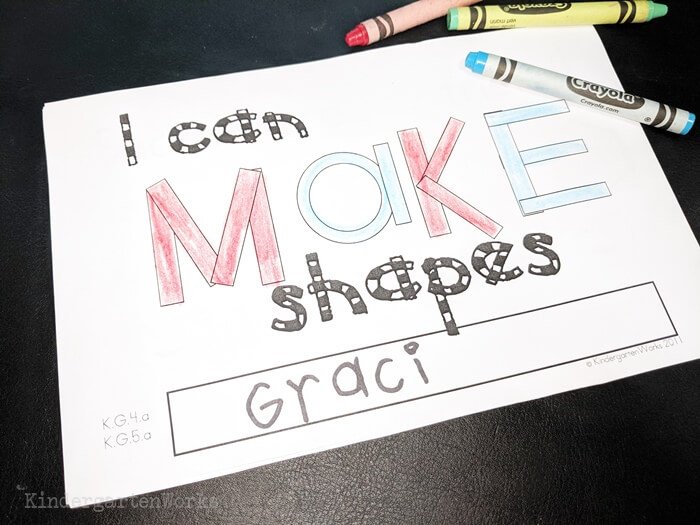
I’m not trying to be over-simplistic.
I’m trying to lay a solid foundation that will eventually carry them into 3D shapes.
The visual support – dots and lines
This little booklet was created to give students a way to “show” their math thinking when they aren’t at the point of writing words yet.
It has traceable parts because students are still learning how to write their numbers in the early fall when I’m covering this concept.
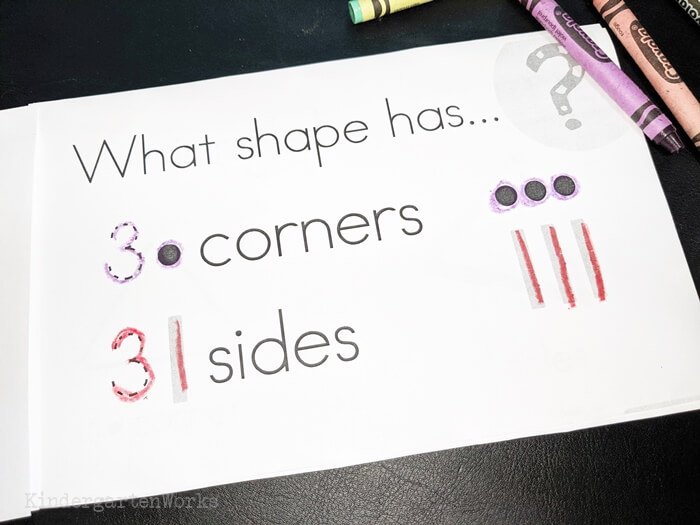
It has dots for students to color and traceable lines. This helps them identify the attributes we’re teaching – the corners/vertices and types of sides.
Students trace the numbers, sides (represented by lines) and the corners (represented by dots).
There is a longer-term goal behind teaching this —
When you teach students to use dots to represent corners and lines to represent sides, you are giving students who can’t write words a way to show their thinking in their math journals (or wherever) when they are “describing” 2D shapes on paper.
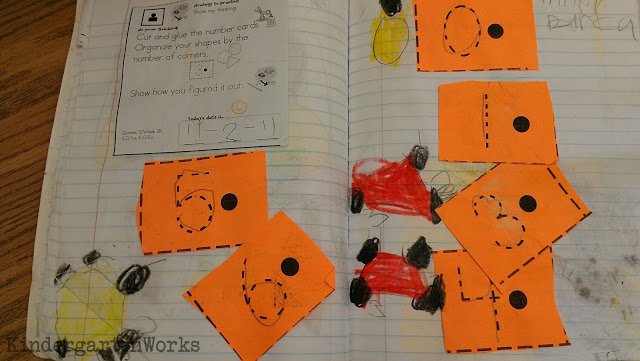
How I used it
This describing shapes mini-book was created to help us meet Common Core Standards:
- K.G.4.a – Describe two-dimensional shapes to identify their various attributes, including vertices, sides, corners, and length of sides.
- K.G.5.a – Draw shapes to represent objects in the world.
It can be done whole group. It can be done in small groups.
That’s up to you.
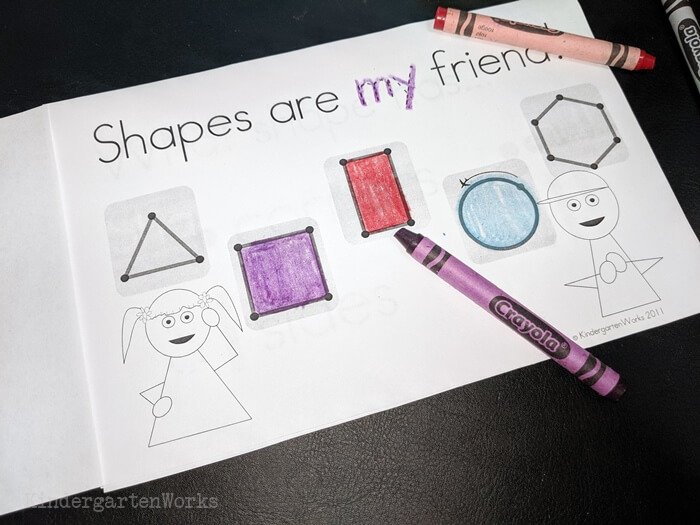
I made this little booklet to use with my guided math groups. These are my small groups of students I meet with during math time.
Since I used it in small groups – here’s what I did:
Each student had their book out in front of them and we focused on one shape each day.
We’d talk about and do the two pages for that shape in this mini-booklet.
Do the clues page
Students point to the words with me (kinda like in a reading group) and then we trace the numbers (saying our number formation poems) and tracing the dots and lines.
I usually had them use one color crayon for corners and one for sides.
Then we talk about what shape it could be and I pull out my shape manipulatives (circle, square, rectangle, triangle, hexagon) if needed so we count guess, count and talk about it before we turn the page.
Then we turn the page to see if we were correct.
Do the solution page
Then we have to be “detectives” to see if we can indeed find all of the corners and sides from the clues page.
Students use a new color crayon to color in each corner or to trace each line. That way they are recognizing these as separate things.
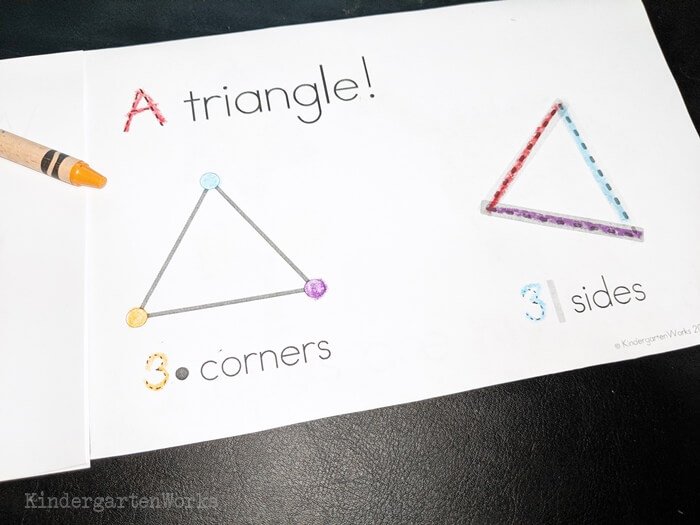
Picking up and putting down the crayon each time they trace/color one piece helps them make the connection to the number of attributes, which otherwise can seem kinda intangible.
That means a triangle would have 3 different colored corners and 3 different colored sides – the square would have 4.
They also trace the numbers at the bottom of the page and read those “clues.”
Then they can take turns “reading” their new pages of their book to a partner or to me. I’d collect books for the next time we met as a group.
The next we met, we’d re-read the completed pages to help warm-up for the next shape! Books were sent home when completed.
Want to use this in your classroom too? I’ve got your back!
How to make the mini-booklet
Here’s how to make this mini book to describe shapes:
- Download this free describing 2D shapes booklet. You agree to these terms of use by doing so. [downloading help]
- Print the book double-sided and staple sets together.
- Cut books apart.
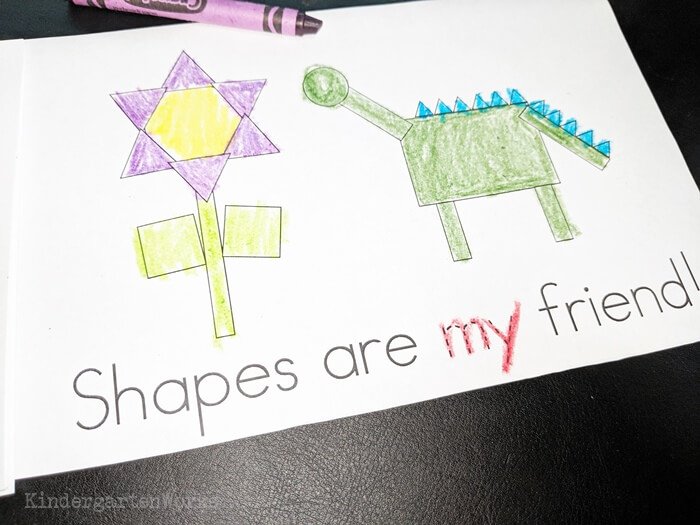
These were designed to be printed in black and white so students can color and trace. The front cover can be colored too along with the introductory and ending page.
And you’re ready to use.
Let’s wrap it up
I hope this mini-booklet helps you introduce to describing 2D shapes in a smart way – by using dots and lines to give them the support they need.
You may also love this free Describing 2D Shapes Partner Game you can make for your kindergarten class.
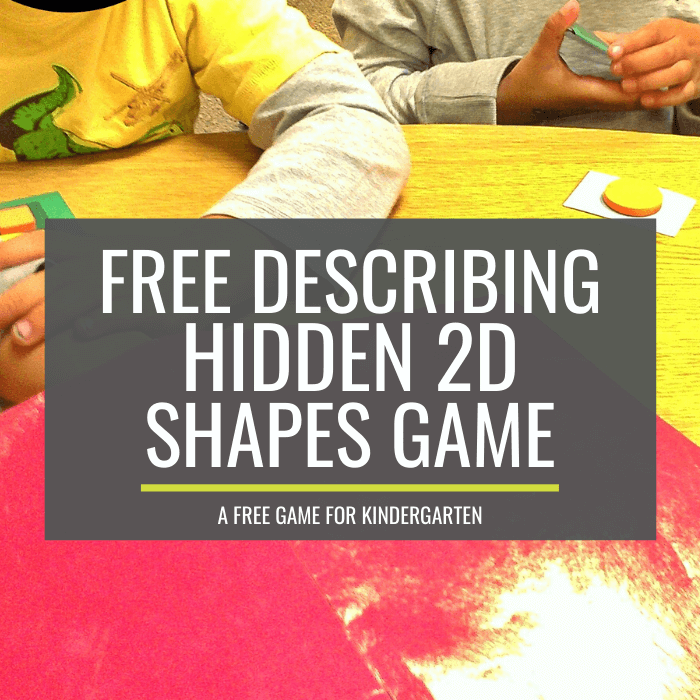
If you like what I do here on KindergartenWorks, then be sure to subscribe today. I look forward to sharing ideas with you weekly.

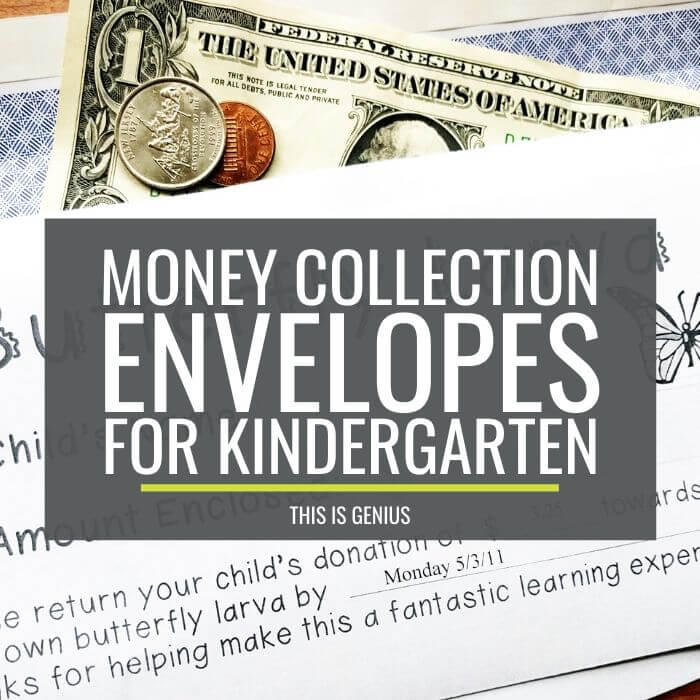
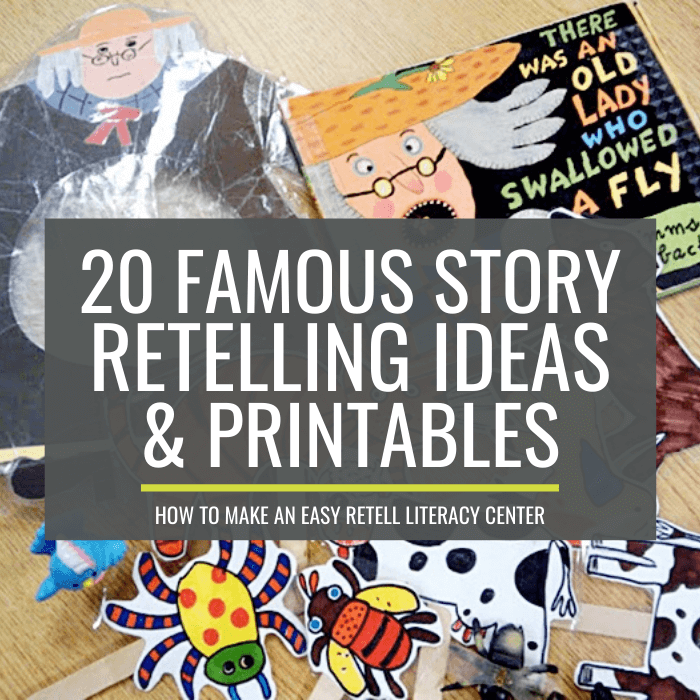
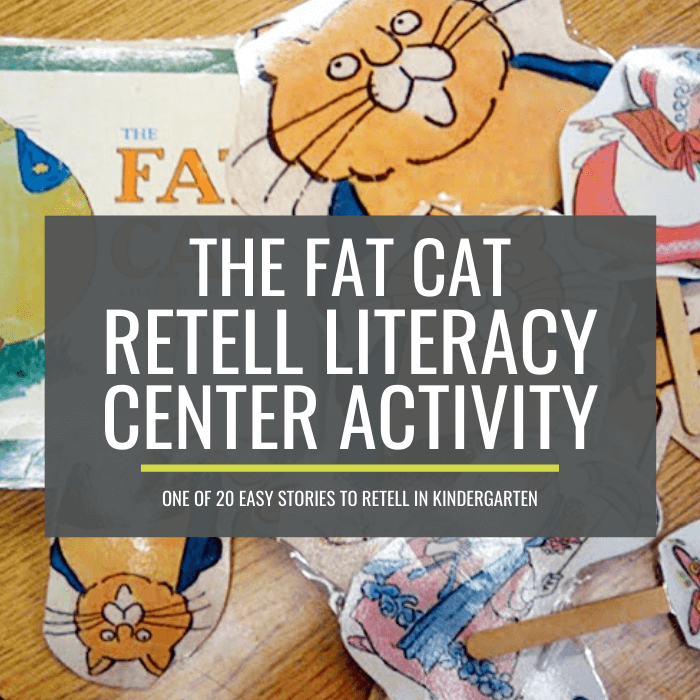


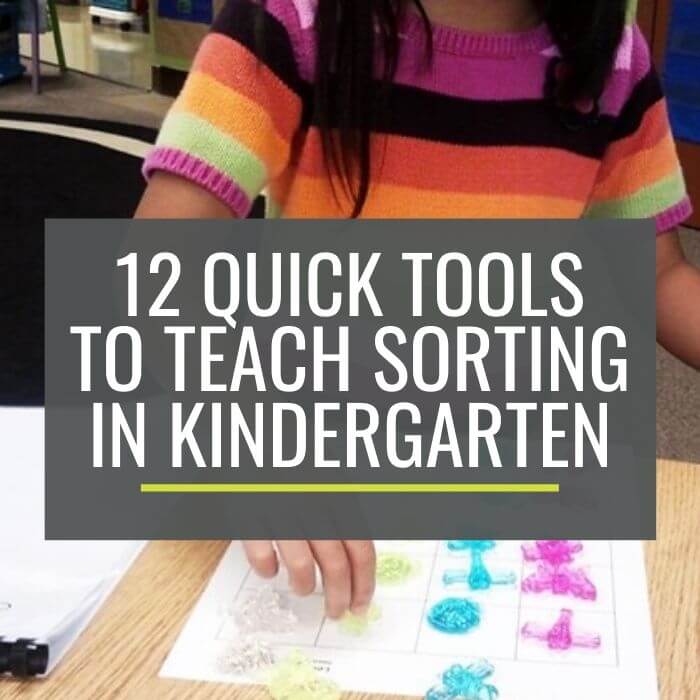
Teaching 2D shapes looks great ! I would love one. Than you.
Thank you so much!
I love this booklet. Have you created one for 3d shapes?
I haven’t but I have some good 3D shape stuff I’ve found here: I haven’t but I have some good 3D shape stuff I’ve found here: https://www.kindergartenworks.com/guided-math/dimensional/ – Leslie
Hi. Your mini describing shape book is exactly what I am looking for to teach the 2D shapes to my kniders.
Thanks for sharing.
Hi, your site looks amazing, with great ideas. I would love a copy of your Describing 2D shape booklet.
Cheers,
Sarah